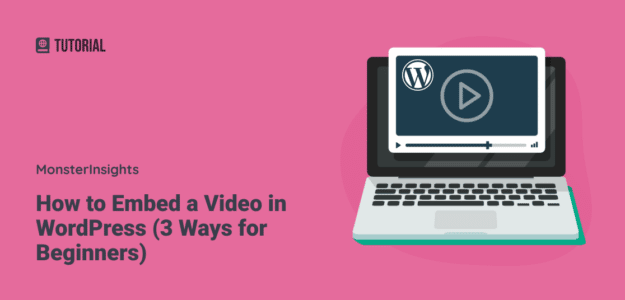Putting video on your website is a proven way to increase interest and the time visitors spend on your site. Do you want to know how to embed a video in WordPress using the easiest ways possible?
In this article, we’ll go over 3 different ways to embed a video into a WordPress webpage or post. Embedded videos are hosted somewhere else, like YouTube, but they get displayed and played on your website.
We’re also going to show you how to track your video plays and other stats in WordPress.
Why Add Video Content to Your WordPress Site?
People who browse the internet these days expect a full, rich experience when they visit websites. That means you need to offer a variety of content, and content that promotes interactivity. Adding video to your site accomplishes both of these goals.
Is It Hard to Add Video to WordPress?
It’s actually very easy to add videos to a WordPress site. There are several methods, and most of them only require you to copy and paste a video URL or a short string of text.
All right, since we’ve told you how easy it is to embed a video, let’s jump right in….
3 Simple Ways to Embed a Video in WordPress
We’re going to describe the easiest possible methods for embedding a video into a WordPress post or page.
- Embed Videos With a WordPress Plugin
- Embedding Video with the WordPress Block Editor
- Embed Video Using WordPress Classic Editor
We’ll start with the most powerful, effective way to add video to WordPress: using a specialized plugin designed for managing YouTube video content.
Method 1: How to Embed Videos in WordPress Using a Plugin
WordPress users are lucky to have a huge selection of plugins that make it easy to add advanced features to websites, even for beginners.
Now, anyone can embed video files on a WordPress site without any programming or technical experience!
In this tutorial, we’re going to use Smash Balloon’s YouTube Feed Pro to embed YouTube videos.

YouTube is the world’s most popular video hosting platform, and Smash Balloon lets you put YouTube content right on your website.
You can add YouTube videos from your own account or from another account. You can even create a search term and display videos that match your search! You’ll also have many display options, from a gallery view to single videos.
To get started, you’ll need to install Smash Balloon’s YouTube Feed Pro plugin on WordPress.
Install and Activate YouTube Feed Pro
Visit Smash Balloon and get your YouTube Feed Pro license here. The Personal plan gets you all the features you’ll need to embed videos on a single website.
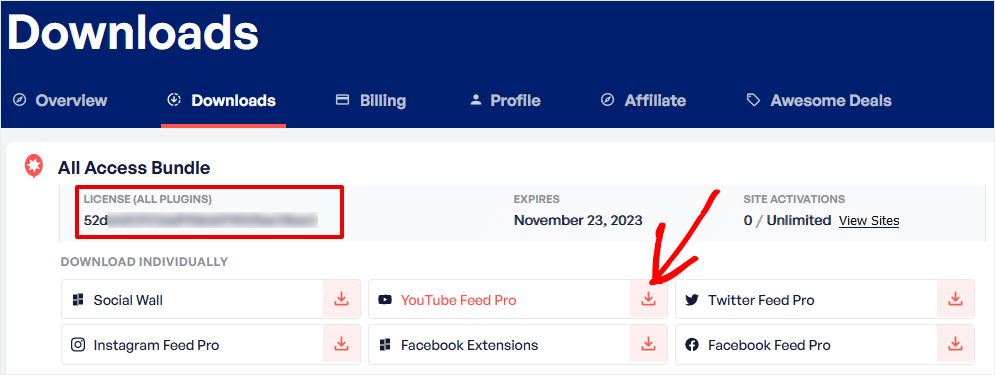
After completing your purchase, visit the My Account » Downloads page on Smash Balloon to grab the plugin file. Just click the download icon next to YouTube Feed Pro to save to your computer.
While you’re on the Downloads page, you should also go ahead and copy your license key from the License field. You’re going to enter that license key into WordPress in the next step.
At this point, you need to log into WordPress to complete the installation. Once you’re in the WordPress dashboard, click Plugins » Add New. Then, click the Upload Plugin button at the top of the screen.

Now, select the file you downloaded from Smash Balloon and click Install Now.

After the plugin installs, click Activate Plugin and you’re done! To confirm, check your WordPress dashboard menu for a new item titled YouTube Feed.
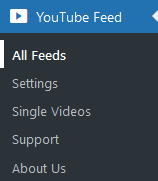
Okay, one last thing to finish the setup. Click on YouTube Feed » Settings and enter the license key that you copied earlier from your Smash Balloon account. Once you paste the key, click Activate to finish.

That’s it, let’s go on and create a new video feed to embed in WordPress.
Create a New Video Feed
To make a new video feed in the plugin, click on All Feeds in the menu. Since you don’t have any feeds yet, this screen displays the new feed wizard. You can click the Add New button.
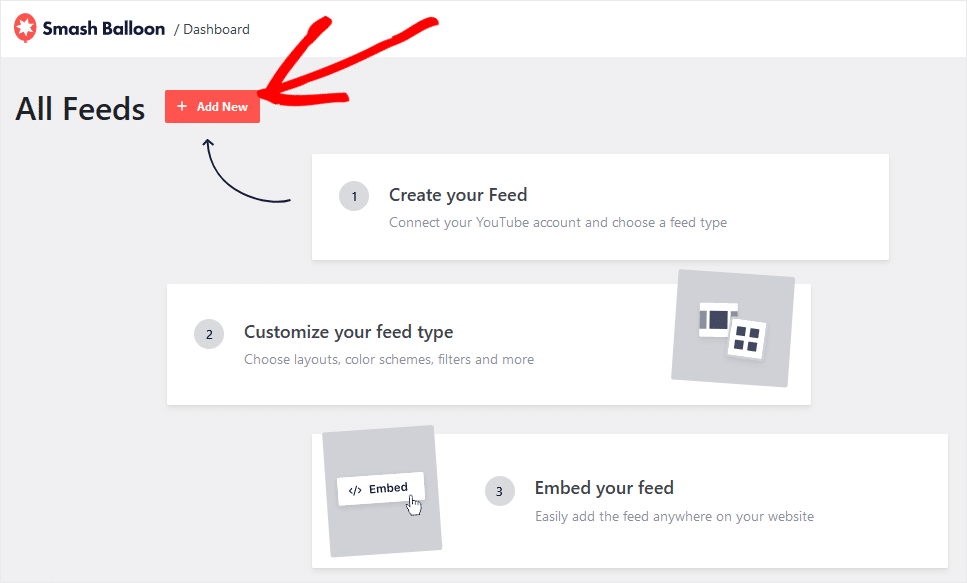
Now, you’ll see the various feed types that you can embed using Smash Balloon. You have 6 options here:
- Channel – Shows a feed of all the videos on the selected channel
- Playlist – Displays a playlist that you choose from your channel
- Favorites – Shows any user’s favorite videos
- Search – Displays videos that match your chosen search criteria
- Live Streams – Shows current and upcoming live stream videos
- Single Videos – Lets you curate a list of single videos to embed
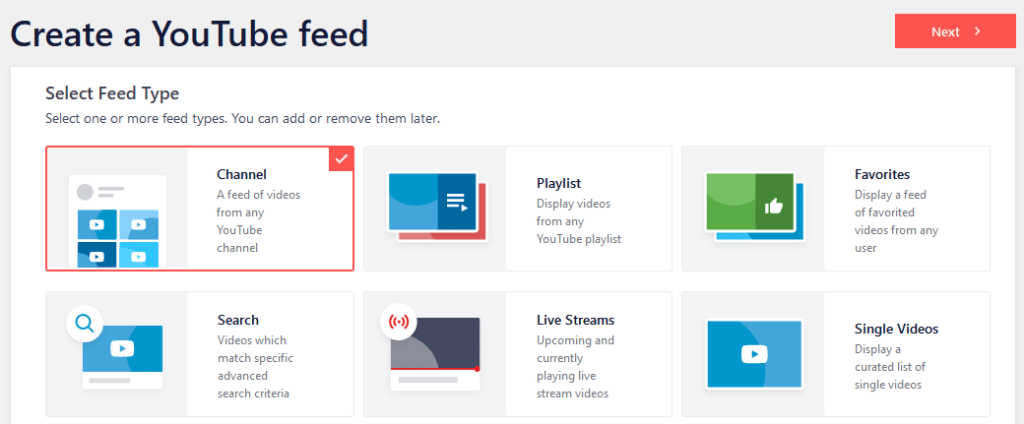
Select the feed style that you’d like to show on your website, then click Next.
Here, you’ll be prompted to connect your YouTube account using your Channel ID or Username.
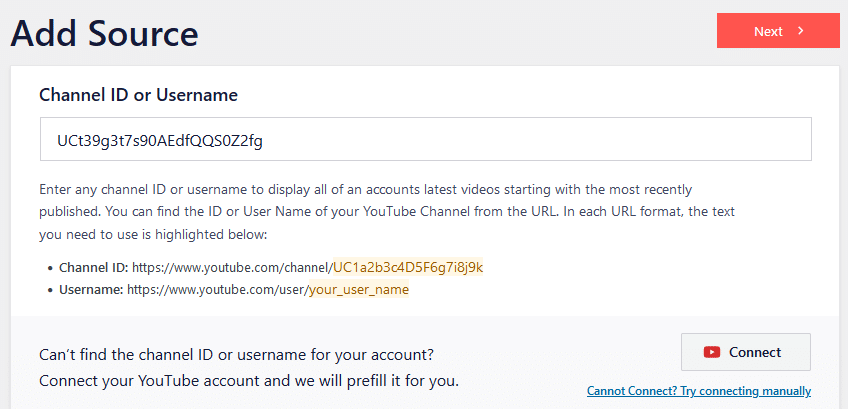
Your channel ID is the string of letters and numbers you’ll find in the URL when you’re in your channel dashboard in YouTube. The channel ID is shown in the red box:

Your username is shown in the URL when you’re on your channel’s homepage. For example, in this URL, www.youtube.com/@Monsterinsightsplugin, the username is @Monsterinsightsplugin.
Enter one of these two items in the box and click Next. At this point, you’ll be asked to enter a YouTube API key or select an account to connect to.
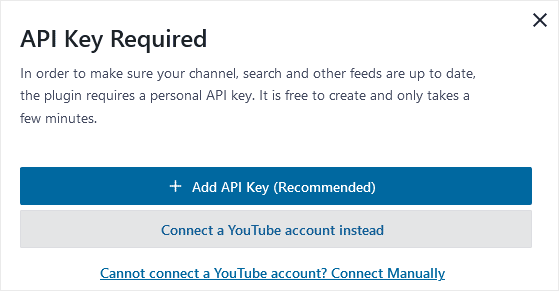
The best option is to enter an API key from Google that verifies your YouTube account. Just follow this simple guide to get a free API key from Google.
Design and Customize Your Embedded Video Feed
After you enter your API key, you’ll select a template to start your design. Don’t worry, you can easily change this later.
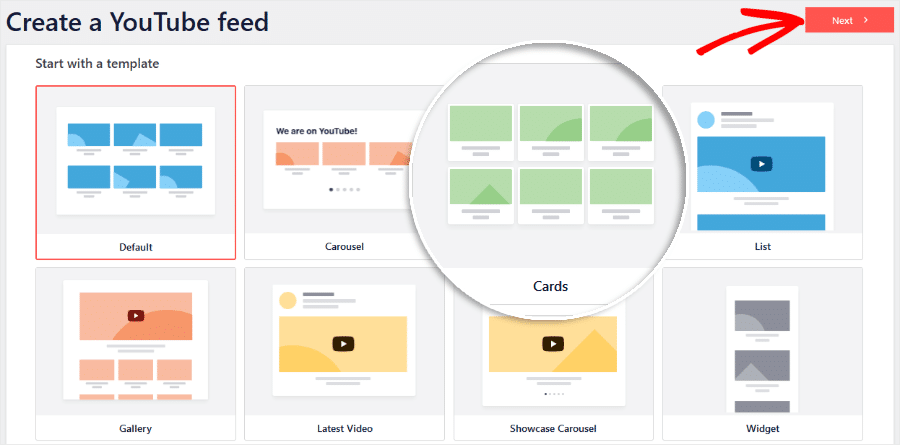
Click Next to continue. Your feed is ready, but now you get the opportunity to customize it to make it exactly how you like in the feed editor.
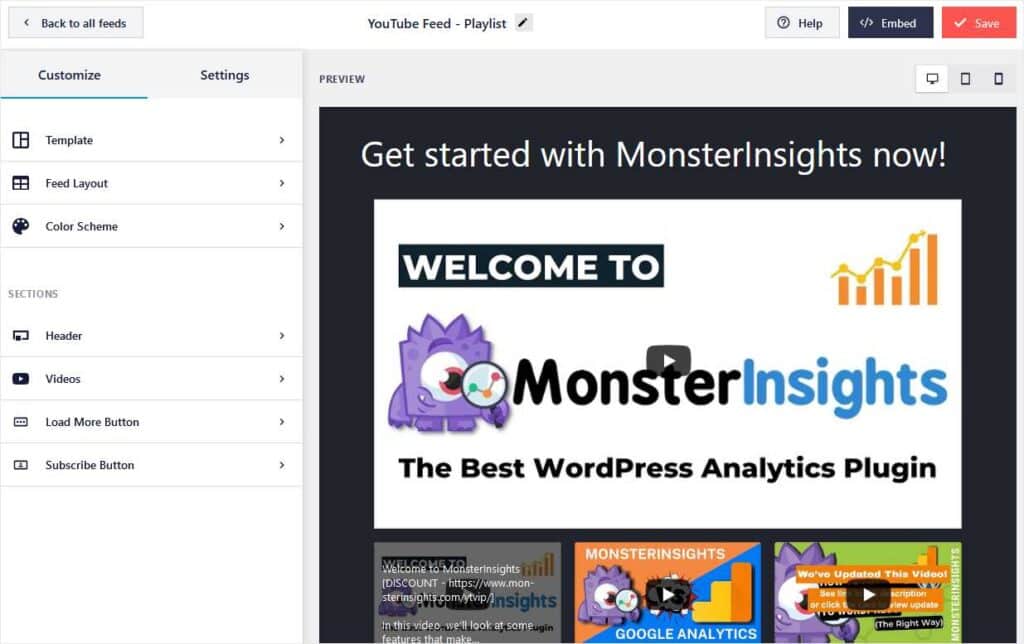
Here you can change your template and preview what they all look like. You’ll also have options to edit your layout, colors, header, buttons, and video player appearance.
In the Settings tab, you can change your feed type and the source, set filters on which videos to show, and change other advanced settings.
When you’re happy with your video feed appearance in the preview screen, click the Save button. Your feed is all set up and ready to publish, great job!
Publish Your Video Feed on WordPress
To publish your YouTube feed as embedded video on WordPress, click the Embed button in the feed editing screen. Make sure you save all your changes first!
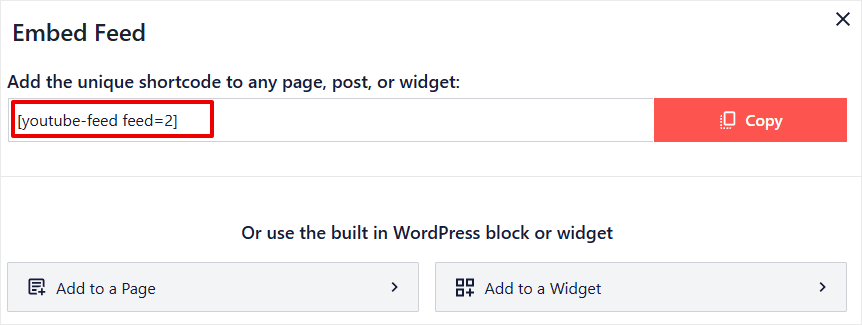
The Embed Feed box opens up. This gives you 3 options for embedding your video feed.
First, you can copy the shortcode and place this text into any page, post, or widget.
Second, you can click the Add to a Page button to see a list of all your published pages. Select a page and click Add to open it immediately in the editing mode. Then you’ll be prompted to select a block named Feeds for YouTube.
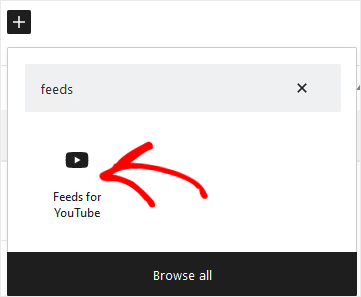
Just click on the block and your feed will be placed on the page!
Finally, if you want to embed video in a WordPress widget, you can click the Add to a Widget button. The Widgets screen will open and create a widget with your shortcode. Place the widget wherever you want, in a sidebar, footer, or other widget location.
All right, that wraps up our tutorial on using a powerful plugin like YouTube Feed Pro to embed video in WordPress. As we promised, now we’ll see how to add video without a plugin.
How to Add Video to WordPress Without a Plugin
Now, maybe you have videos that are hosted on another service besides YouTube. You can still easily embed those videos on your WordPress site.
We’ll show you two ways to embed video in WordPress without a plugin. One method uses the WordPress block editor, the other works for the classic editor.
Unfortunately, these methods really only work for adding individual videos. So, if you want a gallery or carousel display type, or want to show multiple videos, playlists, and so on, you’ll need to stick with a plugin.
Let’s start with the block method….
Method 2: How to Embed a Video with WordPress Blocks
Do you use WordPress’s Gutenberg block editor in your page editing screen? If so, we’ve got a super simple solution for embedding video content using blocks.
First, you’ll open a video on YouTube or other service that you want to embed on your site. Then click the Share button. Here’s what it looks like in YouTube:
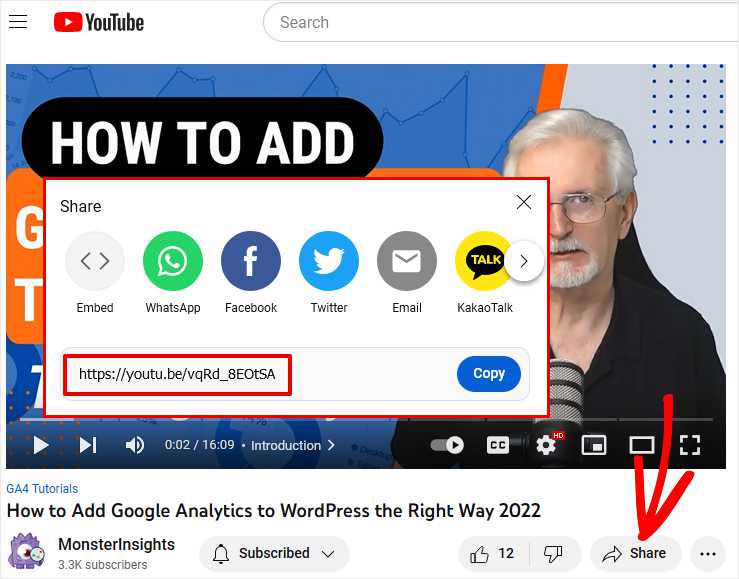
The Share dialog box opens, with a shareable link for the video. Copy that link by clicking the Copy button.
Now, open a page or post in WordPress and place your cursor where you’d like to embed your video.
Although you can select a block type first, you can also just paste the link into the default Paragraph block. If WordPress supports the video service, it will change the block type automatically.
Here’s what the sharing link looks like in Vimeo:
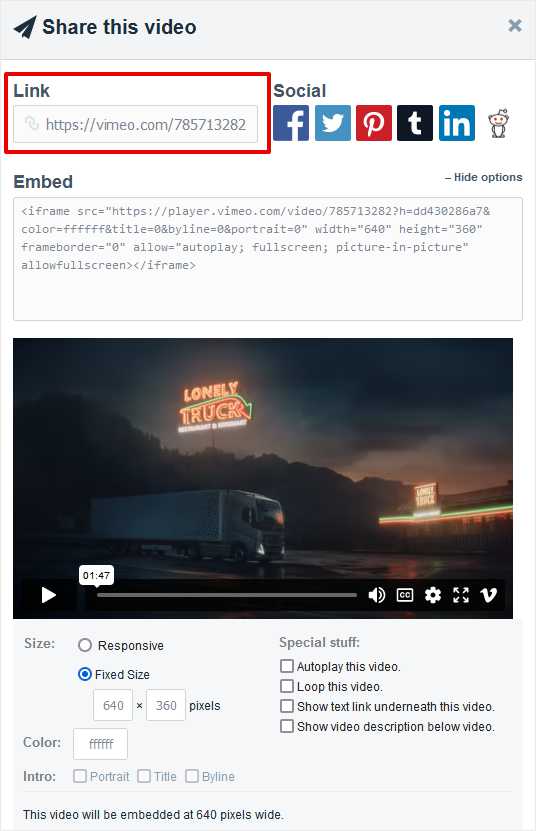
After you paste this link into WordPress’s block editor, if the video appears that’s all you have to do!
If the video won’t display, then WordPress may not support the video service where you copied your link. Here’s a sample of the <embed> blocks available in WordPress.
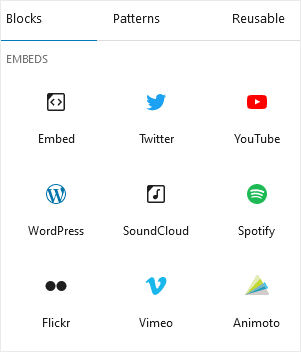
As you can see, there are several video platforms supported including YouTube, Vimeo, Animoto, and more. There’s also a generic Embed block that you can use if your platform isn’t natively supported.
If you’d like to embed your video in WordPress using its native block, just search for the name of your video platform. Add the block to your WordPress page, then paste your video URL into the field provided. Here’s the Vimeo block in the WordPress page editor:

That’s all there is to adding a video in the WordPress block editor. Pretty simple!
Method 3: How to Embed a Video in WordPress Classic Editor
If you’re still using the old classic editor in WordPress, it’s still easy to embed videos. The process works slightly different, so let’s take a look.
The WordPress classic editor has two tabs: Visual and Text. If you’re editing a page in the Visual tab, you can simply past the URL link for sharing videos from your service, if it’s supported by WordPress.
So, the Visual tab basically works just like the block editor. Paste your video URL link into the page, and WordPress configures the video automatically.
However, if you want to add a video using the Text tab, you can’t use the URL link. You’ll need to grab the embed code from your video service.

In Vimeo, it’s in the Embed box as seen in our shot above. Just copy this code and paste it into the HTML code inside the Text tab in WordPress.
In YouTube, you’ll need to click the Embed button in the Share dialog box.
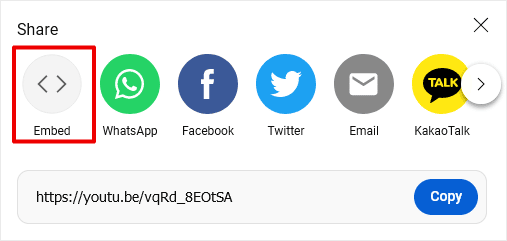
Then, you’ll see the code you need to copy to embed the video into WordPress.
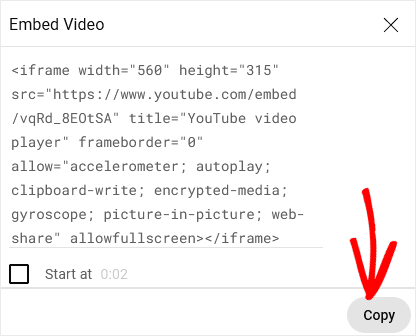
Paste your code in the location where you want the video to appear, and you’re done. Save and preview your new embedded video!
How to Track Video Plays with MonsterInsights
Once your videos start drawing more traffic to your website, you’ll want to know exactly how users are interacting with that content.

When you use MonsterInsights, the best Google Analytics plugin for WordPress, you can see your video stats right in the WordPress dashboard. And, the plugin sets up video tracking automatically, so you don’t have to worry about adding custom code or tags to your website.
MonsterInsights supports YouTube, Vimeo, and HTML5 video tracking in WordPress.
In order to get the advanced video tracking features, you’ll need a MonsterInsights Plus plan or better.
After you install the MonsterInsights plugin, you can activate the Media addon to access the Media report. Then, to see your video play stats in MonsterInsights, go to Insights » Reports and click the Media tab.
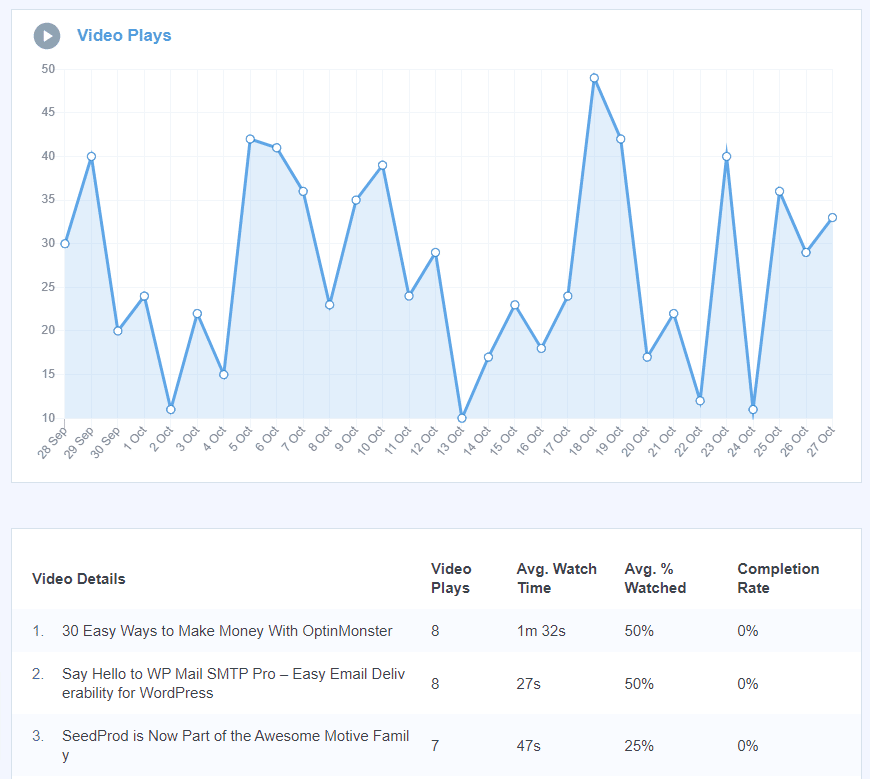
Here, you’ll see a graph showing your daily volume of all video plays. Under that, you get a list of individual videos and how many times each was played, along with these advanced video stats:
- Average watch time in minutes
- The average percentage of video watched
- What percentage of viewers completed the entire video
This data can help you in a number of ways. You might want to switch out videos with low average % watched and completion rates for better performing videos.
Or, if viewers are dropping out early, figure out what’s in your video content that isn’t meeting viewers’ needs. Now you have hard data to see when viewers lose interest and quit engaging.
Of course, MonsterInsights gives you all the metrics and analytics data you need from Google Analytics, not just video tracking.
And that wraps up our tutorial on embedding video in WordPress. If you liked this article, you might want to read this guide to conversion tracking in Google Analytics or How To Boost WordPress Video SEO: Expert Tools and Tips.
Still not using MonsterInsights? What are you waiting for?
Please don’t forget to follow us on Twitter, Facebook and YouTube for more Google Analytics tips and tools.
